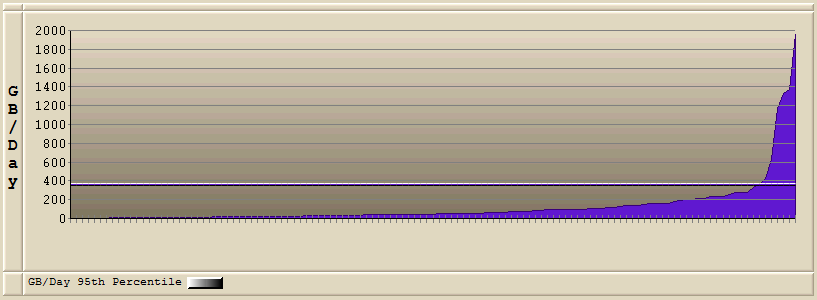Check out IBM's new READ INTENSIVE SSDs.
This is a note to highlight some of the pros and cons - and dig a little deeper into one of the cons - of IBM's recently announced new class of solid state disk drives, "read intensive" (RI) SSDs.
The new RI-SSD comes in one flavor, a 1.86 TB drive. The new concept to wrap your head around is that the drive will "wear out" if you write too much over the life of the drive. One reason this is important is that if you wear out the drive after the warranty expires, replacement is not covered under maintenance. A failed drive is covered under maintenance, a worn out drive is not. This distinction requires the use of the "Fuel Gauge" that comes standard on every RI-SSD. It actually tracks the total number of bytes that have been written. The total allowed is about 3,588,096 GB, i.e., 3.5 PB.
Before digging deeper into that, let's look at price and performance. The price is nice. Less than half of previous SSDs. The performance is nice, too, with a caveat. Read performance is as good as previous SSDs, approximately 100,000 read IO Operations/sec (IOPS). Write performance is significantly reduced, but it probably won't matter. Instead of the maximum 50,000 or 90,000 write IOPS of previous SSDs, you only get 23,000 write IOPS. Keep in mind that a typical spinning disk can only do a couple hundred IOPS. Assuming the performance and storage requirements work out, there's an opportunity to significantly reduce the number of arms, and save on electricity and cooling, to boot.
IBM provided an example that shows a drive that has been active for 158 days. They wrote 191,618 GB to the drive, so it's 5.34% worn out. If you do the arithmetic, that's about 1,213 GB/day, or 14 MB/sec written for 158 days. At this rate the drive will wear out in 8.1 years.
For additional perspective, we did a study to determine how many GB per day were written by small servers. We looked at 121 IBM i LPARs that have 20 or less disk arms. This graph shows one point, GB/Day, for each server.

95% of the servers write less than 400 GB / day. At that rate, how long would it take to wear out a single RI-SSD? About 25 years.
There are one or two machines in our study that rival IBM's example, but that's just one RI-SSD. A server is going to have more than one.
Performance Navigator® has lots of graphs showing IOPS: totals, per arm, averages, maximums, per day, per week, per month, etc. If you'd like to do a simple study of your own on your IBM i, then STRSQL and enter the following SQL statement.
Note: the library might be QMPGDATA, instead of QPFRDATA.
That query shows how many GB of data were written to disk in one particular day. How many years would it take to wear out a single RI-SSD at your rate?
In my case, the answer is 607 years on one machine and 2,358 years on another.
Read intensive SSDs may be perfect for your server(s), or maybe not. Lucky for you, MPG has a funded outsource agreement with IBM to provide you with the answers to such questions. To take advantage of this analysis and modeling service, simply forward this paragraph to your IBM Rep or your Business Partner to get started. MPG will use our proprietary software comprising the Navigator Family® to collect, analyze and validate alternative configurations of SSD for your needs, based on your workloads and disk utilization in your current and projected configuration(s).
IBM Reps and Business Partners: If you have any questions about the service, feel free to contact us at [email protected], referencing your customer name along with your contact information. Or just pick up the phone and call 800-457-6744 and ask for Randy Watson.